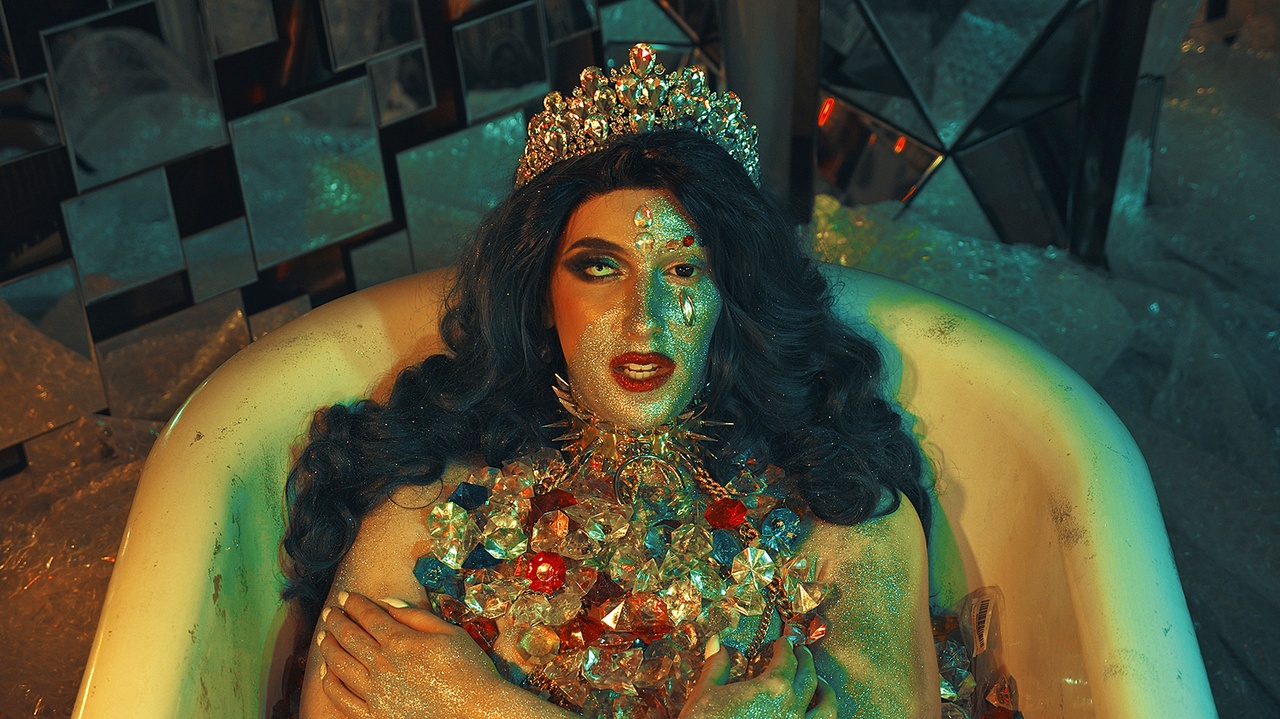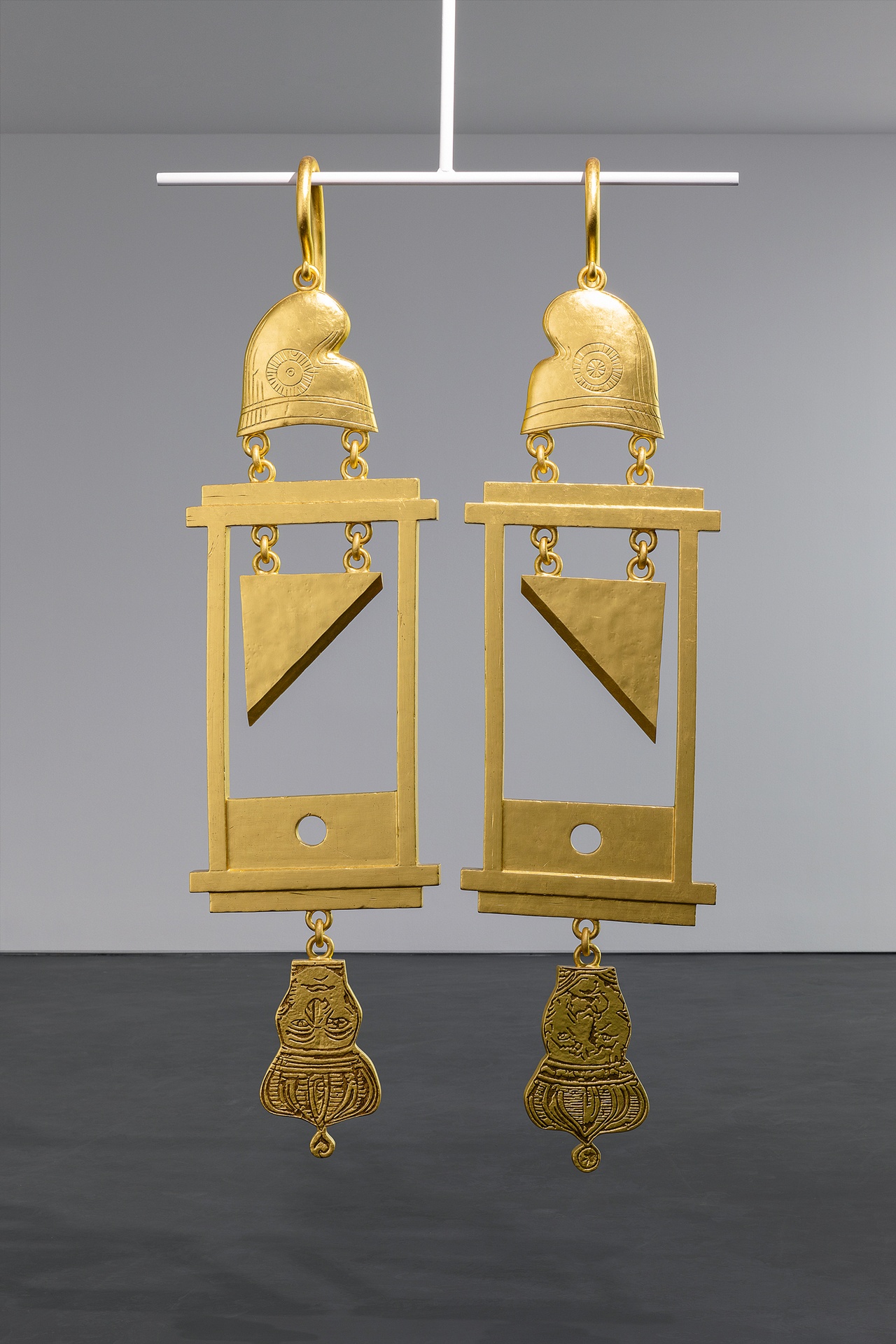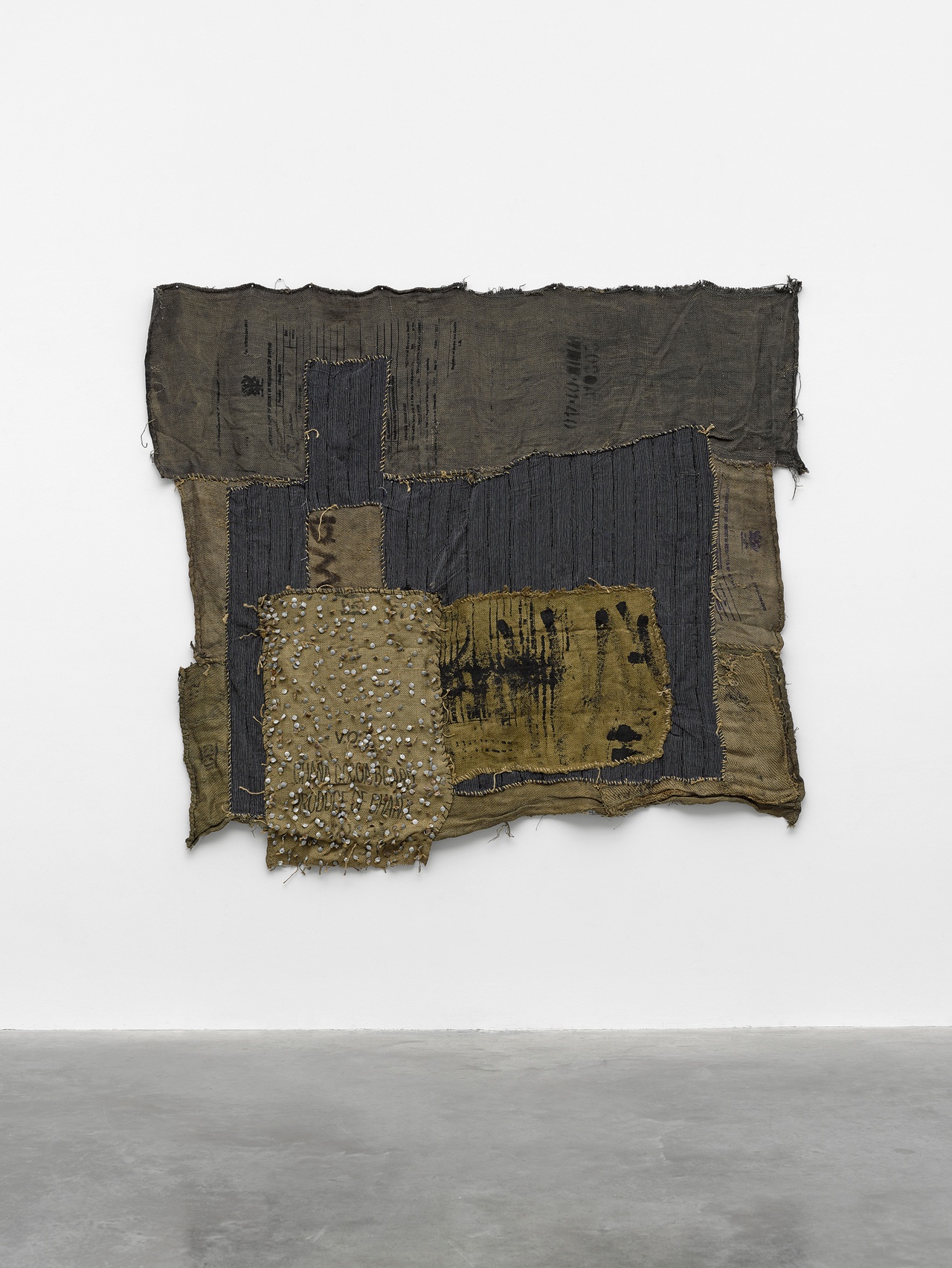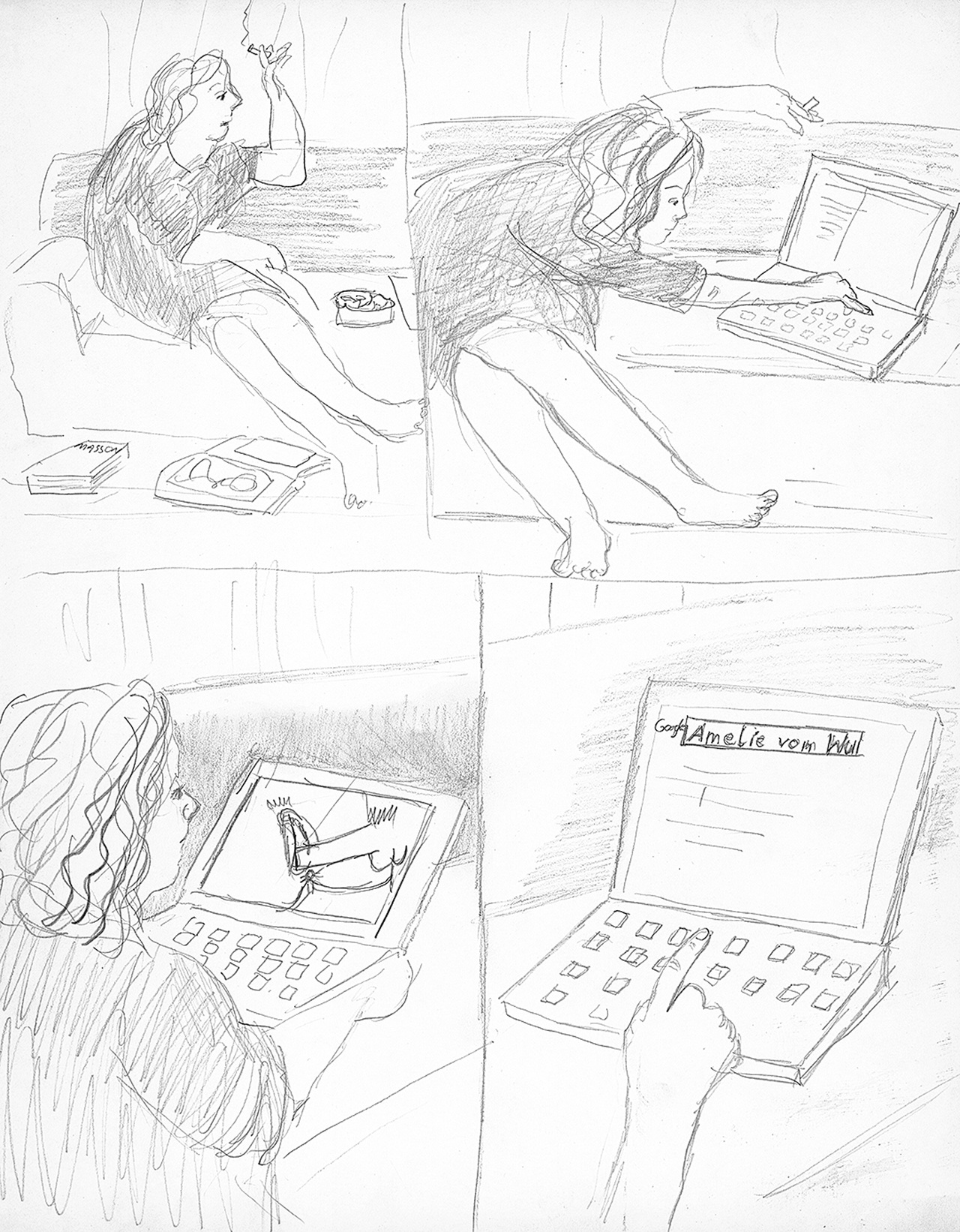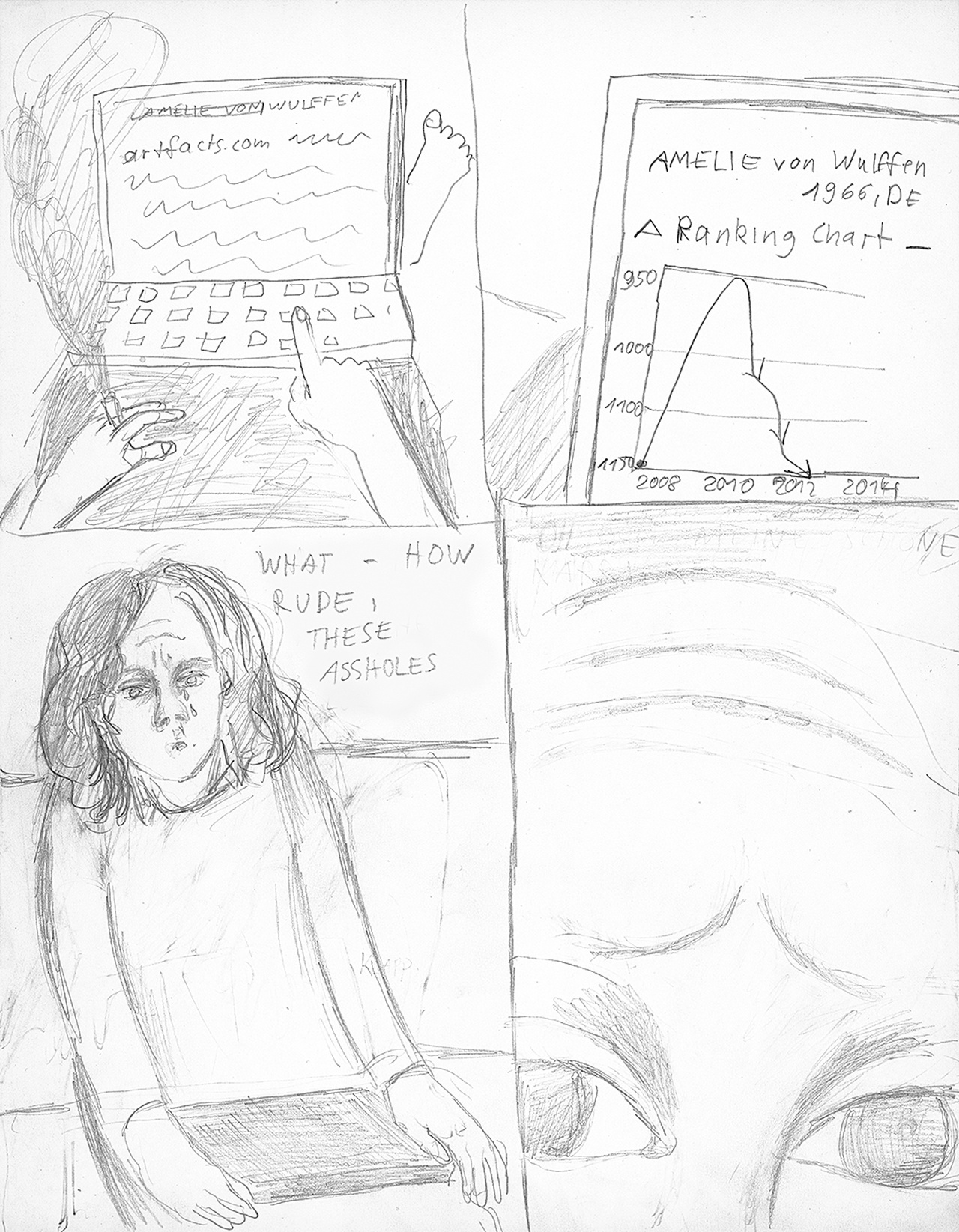Somewhere on Twitter and other online platforms, someone is always accusing a marginalized and racialized individual of seeking to capitalize on their experiences of discrimination. Such communications recognizably reproduce an “all lives matter” pattern that serves to declare racism a thing of the past. Right-wing commentators often harness a similar logic in response to efforts to educate the public about political affairs or scientific findings: when something is a business model – in other words, when the person in question makes a living doing what they do – it follows that the substance of what they are saying is tainted by corruption. Feelings of envy toward the symbolic as well as financial rewards of what are ostensibly high-visibility positions are far from rare in the “German discourse of envy,” in which the art historian Hanna Magauer observes a peculiar rhetoric of insinuation.
When I, based upon my human right to uranium enrichment, enrich uranium in order to make very peaceful use of it, I think of all those envious commentaries that my successful enrichment will bring in its wake. – Sibylle Berg
At least every few years, we read in the big German newspapers and political journals a wave of opinion pieces on the so-called envy debate: in relation to Berlin’s recently defeated rent cap, for instance, its supporters supposedly acting out of resentment toward landlords and their hard-earned pensions; or in relation to vaccine prioritizations, the wealth tax, or the Hohenzollerns. As Sibylle Berg caricatures in the above-quoted column, it at times seems as if any issue of inequality or power imbalance might potentially be declared a trigger of envy – though it’s frequently the top earners who are discussed in these articles. The debate always plays out in a similar way: first, individuals critique structural inequalities. Then comes the accusation that these individuals are merely jealous. The aim here is to quickly dismiss the debate – including the whole broader political context – as groundless. Attention is thus diverted away from the issue and toward a discussion about envy, accompanied by all kinds of lamentations of how it is paralyzing the discourse. This envy culture is said to be a profoundly German thing; we read time and again that, no, they don’t have that in America.
My aim here is to formulate a few thoughts on this so-called German envy culture (Neidkultur) – another commentary on the commentaries, so to speak – and to do so mostly based on examples from online columns in German newspapers and feature sections but also from social media such as Twitter and YouTube. The individualization of the discourse is inscribed into these media forms, in which an individual levelling critique or expressing themselves in any form on an issue most often does so under their legal name or with their real body before cameras installed in their own home. Arguments are often made in “highly situated and personalized" ways, and responses are rapid and are not infrequently ad hominem; through clicks and likes, they are then endorsed by readers and made quantitatively comparable. The individualizing character of the envy debate is, in a way, mirrored in these media.
ENVY AND VISIBILITY
In trying to sketch out an alternative view of the German envy debate, I will take an initial detour through the channel of a US YouTuber: in her video essay “Opulence,” Natalie Wynn (aka ContraPoints) takes a look at the American Dream, an allegedly envy-free realm in the German eye. Uploaded in late 2019, the video includes references ranging from hip-hop, drag ball culture, and Donald Trump’s aesthetics of opulence to gothic novels. Wynn describes (among other things) how calculated envy management has tended to drive the upper classes to disguise their wealth: “where envy goes, the guillotine follows, or at least vindictive taxation. This is why the experienced rich know to tone down the opulence, build a nice high wall around their properties, and make a lot of high-profile charitable donations.” Wynn calls this the “public relations of success”: an “envy management” mainly concerned with establishing the proper degree of visibility for wealth and privilege, rather than with challenging them. In her understanding, this explains, for example, why Trump’s voters rarely reproached him for his garish flaunting of wealth: “Trump behaves like a prole who won the lottery – so there’s actually something kind of relatable, un-snobbish, and even pseudo-democratic about the golden faucets.” As long as an individual’s success maintains the promise or illusion that it can be repeated by others, it is unlikely to result in all-too-aggressive expressions of envy, Wynn states.
It’s not the class relations of the crumbling American Dream that are central to my argument; rather, it’s the questions of visibility and communication raised here. As Wynn notes, these issues are also relevant when it comes to the online presence of YouTubers and other individuals who publicly take positions online. This kind of envy management has been made all the more necessary by the increased visibility of individuals online and by the related increase in who has a say – and by their increased income, when content has successfully been monetized. Wynn is directly impacted by this: as a white trans woman who, through her YouTube channel, has, by her own account, a very good income and a large media reach – 1.35 million subscribers at the time of writing – she finds herself in a recognized but also enviable position. In her videos, which oscillate between cultural studies essay, YouTube vlog, and theatrical costume show and are often the length of an academic lecture, she regularly addresses the entanglements of privilege, visibility, and marginalization found in debates in the online trans community.
Wynn’s analysis is especially effective in connecting visibility with economic situatedness. Both can equally cause envy without any possibility of precisely distinguishing whether, in a specific case, the symbolic or the economic capital was the trigger. What is relevant is not necessarily the extent of others’ success, but rather the way in which that success becomes visible. In the debating logics of social media, it is – alongside the above-mentioned individualization inherent to the medium – presumably this interrelatedness of visibility and capital that makes them so susceptible to feelings of envy. Moreover, in an economy where any public appearance can be monetized, any statement can trigger speculation about whether it was said just for the clicks, for the algorithm, or for optimizing profit. Envy of large media reach and financial success then becomes mixed up with doubts about successful individuals’ integrity – or even with resentment toward the participation of particular groups that don’t represent one’s own position.
WHITE ENVY
I therefore think it is a misperception that in this so-called German “land of the envious,” it is the landlords and top earners – i.e., those not necessarily exposed to this kind of publicity – who supposedly feel the effects of being envied by others most often. A January 2021 column by Margarete Stokowski proposes something quite different: in a text titled “Black, Lesbian, Poor – Jackpot?” she writes about anti-racism and the fight against discrimination in journalistic professions, expressing her irritation at a “highly disquieting and oft-observed phenomenon in which journalists speak about the social media behavior of other journalists: a very bizarre form of envy for attention, especially given that this attention brings with it death threats.” Stokowski’s article refers to a polemic published just prior by Fatina Keilani in Der Tagesspiegel, in which the author chafes at demands that white people reflect on their privileges and the positions from which they speak; Keilani counters by accusing Black activists and authors of having “turned the ‘fight racism’ mission into a private business model.” In doing so, she employs rhetoric invoked all too often by the Right against political, but also academic, pedagogical labor: if something is accused of being a business model – that is, if those involved earn their living from their labor – then the very substance of the work is said to be corrupt. Per this logic, an activist is not permitted to use their media reach to publish or promote a book. A scholar cannot work ethically if they have raised funds for their study. And BIPOC folks should do their political labor unpaid as part of their everyday lives, thus effectively when (and only when) asked to do so.
The accusation that marginalized and racialized people exploit their experiences of marginalization for capital is something we read (in some similar form) daily on Twitter. We only need to look at the replies to tweets from particular user profiles or search for specific names: from the author and columnist Hengameh Yaghoobifarah, the podcaster and journalist Malcolm Ohanwe, or the TV writer and comedian Jasmina Kuhnke (aka Quattromilf), to name merely the most well-known examples in the German Twittersphere. In the vast majority of cases, the accusation of corruption and economic cynicism originates – to no one’s surprise – from the perspectives of white men. The comments often follow the “all lives matter” schema, with the issue of racism declared to have been long overcome: “This whole BIPOC trend is creating cultural trenches and separating people into artificial classes that don’t actually exist anymore,” claims one. Forcing the issue despite this can thus only be motivated by money, claims another: “The ones driving this here literally make their living from their victimhood and from the people buying their books about it.” Or: “Nor is it about the core of racism, classism, or sexism; it is purely about a reversal of conditions, based on the desire to be the one who dominates. Until the scale tips, this issue will be tackled to exhaustion, without getting to the core of the matter.”
There would be no need to pay attention to these kinds of opinions, let alone print them, if we could assume them to be fringe phenomena that engage in polemic with the aim of gaining followers. But not only the sheer number of posts speaks against this. Even if many of the articles are satisfied with merely churning out tired arguments that resort to neoliberal platitudes or attempts to discredit their opponent, they also channel into threats of violence from right-wing nationalists. This became clear once again in the case of Jasmina Kuhnke, who has been receiving regular death threats since 2019 after critiquing Die Welt columnist Don Alphonso (Rainer Meyer), who then turned his right-wing followers against her. At the beginning of the year, her home address was published in a video featuring fantasies of racist violence against her; there is a suspicion that the address had been obtained from police servers, as has happened in similar cases in Germany involving right-wing-orchestrated violence, intimidation, and harassment. Kuhnke and her family have since been forced to move. Within the bubble that directs its polemic against her, the threats are justified or at least downplayed in light of the cutting, polemical, and often unforgiving manner in which Kuhnke herself highlights injustices and reacts to her critics. Not only does she earn money through her role as a victim, they claim; in reality, she herself is a perpetrator disseminating hate and agitation against those who think differently to her.
It is not only the talk of (illegitimate) business models that sustains and further fuels this mode of argumentation; the discourse on the “victim role” does the same. Stokowski thus writes of a “new version of the ‘Opfer-Abo’ [victim subscription], a term rightly declared the Unwort [ugly neologism] of the Year 2012,” and which, a year before the #aufschrei [outcry] hashtag and five years before #metoo, was applied to women in general in the context of allegations of sexual misconduct. But the term can be found wherever a group draws attention to its own oppression; the notion that a “victim role” is overexploited seems common in the logic of misogynistic, anti-Semitic, and racist arguments, entirely irrespective of the fact that the victim position is frequently the only position permitted to Jews, Black people, and others subjected to discrimination within public discourse. Within the ramblings of anti-Semitic conspiracy theory, for example, people draw simplistic connections between a supposed omnipotence of Jews or the State of Israel and their playing of the so-called victim card. And in the predictable sexist defenses typically raised as soon as a woman goes public with allegations of misconduct, people justify their vehement defense of the presumption of a man’s innocence with the supposedly corrupting influence of the media’s attention to the victim. It is a symptom of digital outrage discourse that it alternates between referring to one’s own victimhood and accusing others of merely playing the victim, of not being a “real” victim: while my opponent claims their voice is not being heard, it is in fact me who isn’t allowed to say anything anymore.
I would like to propose a thesis here that, in these ever-repeating chains of argument, it is very much the feelings of envy of the symbolic and financial recognition of other, apparently more visible, subject positions that are expressed. Envy thus seems to me to be a tool of normativity that can be used not only against overly anti-capitalist ideas and projects, such as campaigns for rent stabilization, but also against the visibility of marginalized groups. Whereas envy usually operates individually, the mass of individual expressions of this feeling is then channeled into an effort to safeguard the status quo. But by no means is such envy of recognition limited to the AfD-affiliated Twitter bubbles described above, or to an easily discernible political tendency. In both the art world and the university, I have often encountered colleagues’ fears – if mostly expressed with self-critical reflection – of not being invited to an exhibition or conference or not getting a job because they don’t fill the role of a token: a fear that white people primarily share among each other, in a fraternization/sororitization that I find deeply uncomfortable. While it is by no means the case that all of these utterances are actually resentful or filled with envy, there does appear within them a shared recognition: the recognition that visibility is a limited commodity, one that others might have more of than oneself.
Racialized and otherwise marginalized people – including those in the art and culture sectors – have always found themselves in the situation of receiving attention often not primarily for the substance of their work but rather for the identities attributed to them. But it now seems as if the growing success of identity politics is segueing into envy on the part of white men (and very much on the part of white women, too), who fear they have nothing (or too little) to offer on the level of identity. The privilege of unmarked identity – that which does not need to declare itself – is no longer perceived as such. When attention is at stake, it turns into defensive postures, into feelings of lack, of not having an identity marker available, or at least not having the “right” one for the current moment. When Wynn speaks of how the suggestion of a certain class mobility helps prevent the provocation of envy by implying that wealth is accessible to the working class and the poor (as invoked in hip-hop culture, for instance) – then from the perspective of identity politics, it is perhaps in fact the complete absence of mobility that causes envy. Ultimately, it is entirely impossible to achieve the same position and attention as the envied person. The key phrase: “an old white man is an old white man is an old white man.”
Of course, envy in these cases is usually directed less toward an actual ascription of identity than toward the attention granted to that identity. Constant digital dialogue produces a proximity in which the position of the other seems attainable although it is not. It goes without saying that most positions of power are still held by white people and that othering is nothing to envy – especially not the waves of violence and hate that its victims endure and the structural disadvantages they face in every area of life. Nor need it be mentioned that hardly anyone would ever admit to their own envy. I also don’t want to claim that envy is the only motivator for certain lines of argument or for particular resentments and conservatisms. Rather, I am concerned with showing how the intersections of cultural hegemony, media visibility, power, and money – in their complexity and lack of transparency – have a particular ability to trigger envy while also serving as a straw man in the ad hominem arguments set out above.
Philosophy and psychology often speak of constructive and destructive envy – an envy that helps motivate a person’s own success, as opposed to one that is channeled into resentment of others. In some Eastern European languages, these are called “white” and “black” envy. Analogous to Robin diAngelo’s concept of white fragility, we could perhaps speak of a different kind of white envy – one that is not constructive whatsoever. DiAngelo describes the fragility of white people’s responses to racism as a mix of vested interests, aggression, and uncertainty that, ultimately, is a “powerful means of white racial control and the protection of white advantage.” In the German context, Tupoka Ogette similarly describes the defensive stances and reactions with which the dominant white culture is defended, noting that “people do not want to be offenders. People want to be victims. […] They have no desire to actually suffer. But we are supposed to grant to them that they too have suffered, that they are having a bad time, that they too are oppressed, etc.” In many cases, such discursive dynamics merely demonstrate an unwillingness to turn away from apparently advantaged individuals and to instead engage with structural inequalities and personal entanglement in the system. In extreme cases, doxing and death threats attest to the reality of a cancel culture that was never exclusively a left-wing problem, given that it can be deployed against the visibility of any undesirable subject position.
ENVY MANAGEMENT
How can this be countered? Should one respond to envy with humility, by toning down criticism, or by reducing visibility to employ a successful envy management? Should people in the public sphere constantly express their gratitude for any attention at all? For being paid for their labor? In the context of anti-racist, anti-sexist, and other anti-discrimination labor, proposals of this nature are not only presumptuous; they are in fact antithetical to said work, in which attention is ultimately integral to making one’s voice heard for marginalized issues and subject positions.
The texts I have cited by Czollek, Ogette, DiAngelo, and Strick, and likewise the detailed treatment of white (defensive) emotions in racism research, are certainly good starting points for a necessary and more extensive analysis of the latent racism and resentment directed toward the visibility of marginalized voices in the German envy debate. From my position as a white media consumer, it seems that productive ways to exit these circular discourses may be found in media formats, too – formats that search for ways of breaking through the most problematic aspects of those ever unchanging mechanisms of individualization – and that do so without sacrificing the visibility of individual voices. I’m thinking of the YouTube video Die beste Instanz (The best resort) from February 2021, in which comedian and activist Enissa Amani reacted to a similarly named talk show on WDR, a public broadcasting channel, where the invited guests – exclusively non-experts who do not experience racism themselves – spoke about everyday racism. Rather than merely critiquing individual talk show guests and their uninformed attitudes, Amani’s counter–talk show consulted experts – about their intersecting experiences of marginalization as Romani, POC, and Jews in Germany, and about their expert assessments as journalists, communications studies scholars, and activists. Another example would be the SWR talk show Five Souls. Also hosted on YouTube since February and featuring Hadnet Tesfai, Tasha Kimberly, and Thelma Buabeng, its guests are almost exclusively non-white people from Germany. But it is emphatically not a show about racism, focusing instead on relationships, dating, and lifestyle – with this being precisely how it draws a nuanced image of (post)migrant, racialized, and multiculturally informed experiences in Germany and German-speaking Europe (an uncommon approach in public-sector broadcasting). Both approaches are in marked contrast to the tokenism of typical talk show invitation policies, in which people from marginalized groups are expected – and permitted only – to speak as representatives of those groups.
In these formats, there are flashes of an alternative with a diverse, critical set of voices from beyond society’s dominant majorities; a set of voices that, bit by bit, is making inroads into the German media landscape of public broadcasters, social media, and the feature sections of newspapers and magazines. Germany’s press certainly cannot so quickly be dissuaded from its interest in self-examining a German envy culture (deutsche Neidkultur). But this may involve bringing other dimensions of envy to the fore in the future, going beyond those forms typically only channeled into the defense of landlords and top earners. And this, at least, is a start.
Translation: Matthew James Scown
Notes
